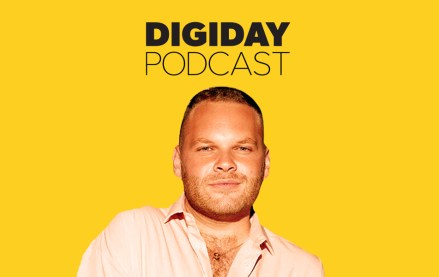Connect with execs from The New York Times, TIME, Dotdash Meredith and many more
This upfronts season, advertisers are leaning on convergent solutions to reach fragmented audiences

Amy Leifer, Chief Advertising Sales Officer, DIRECTV Advertising
For advertisers, it’s the most wonderful time of the year. Upfronts and NewFronts, that is, are much like the holidays — a chance to reflect on what matters most with a solid dose of excitement for the year ahead.
Amid the innovation and progress in the TV industry — and amid economic challenges — the days and weeks around both events are also an opportunity for advertisers to consider how they can help marketers and brands drive their business forward in a meaningful way.
New entrants are leading to fragmentation — and opportunities — as brands and advertisers work harder to build unduplicated reach. Today’s consumers are oversaturated with content and have more viewing choices than ever. For example, a recent survey from DIRECTV Advertising found that 70% of viewers pay for both live and video-on-demand streaming services, of which they have roughly four VOD streaming services on average.
Convergent advertising solutions, like programmatic and addressable, can provide advertisers with an omnichannel approach to TV buying and help manage reach and exposure. Addressable technology allows for precision audience targeting, the ability to better manage reach and control frequency, and can even be used as a unifying technology across linear and streaming campaigns.
Prioritizing performance-based offerings gives brands better insight into ad investments
Now more than ever, brands and advertisers are leveraging solutions that make the most significant impact against their business KPIs. In uncertain times, maintaining a marketing presence and prioritizing efficient media channels can make or break a brand’s success when the dust settles.
Brands and advertisers are making the most of their campaigns by prioritizing efficient spending and investing in solutions that help reach the intended audience without waste, such as addressable advertising. By prioritizing relevance in their advertising and adapting creative messaging to align with how consumers behave today, brands can better measure the impact of their investments and come out on top in the long run.
TV advertisers need measurement solutions that capture audience behavior
The TV advertising industry is witnessing seismic changes, with measurement as a leading challenge. With Nielsen rolling out Nielsen ONE, plus new alternatives like Comscore, iSpot and VideoAmp taking center stage, there has never been more opportunity — or more confusion — about what measurement vendors to prioritize.
In 2023, advertisers and publishers need to test and learn, staying flexible as the measurement ecosystem matures. As the industry evolves, it’s an ideal time for the buy-side and sell-side to work closely together to ensure that measurement and currencies reflect the ever-changing consumer behaviors.
Marketers are balancing contextual ads and audience targeting to address changing privacy regulations
As more states implement new privacy regulations and third-party cookies and device IDs are slowly depreciated, advertisers know the impact will be significant. To prepare, they are already honing their new strategies on first-party data and flexible contextual solutions.
Brands and advertisers can navigate this new world by finding the right balance of contextual and audience-targeted solutions and working with partners who can leverage first-party, privacy-compliant audience data and contextual signals for targeting. They can also use tools like data clean rooms to match first-party data securely without sharing personally identifiable information, which brings critical value in a cookie-less future.
With the growth of content and services, viewers aren’t necessarily cord-cutting. Instead, they’re cord-stacking to get the content they want whenever they want to watch it. For marketers to maximize potential reach in the current environment, brands need to think about premium TV content holistically and buy convergent solutions.
For instance, last year, DIRECTV partnered with Yahoo to make linear, addressable inventory available in the Yahoo DSP to provide marketers seamless access to linear and CTV inventory. DIRECTV also worked with Magnite to extend programmatic automation to its STB VOD (Set-Top Box Video On Demand) inventory. With traditional TV and digital video access, marketers can reach the largest audience and set themselves up for success in an increasingly fragmented landscape.
As consumers seamlessly toggle between traditional and streaming, marketers should follow suit and remember — it’s all TV.
Sponsored by DIRECTV Advertising
More from Digiday

In Graphic Detail: Inside the state of the creator economy industrial complex
The creator economy might have started out as an alternative to traditional media, but is becoming more and more like it as it professionalizes.

Ad Tech Briefing: How ad tech underpins the fate of Madison Avenue’s ‘Wedding of the Year’
The ‘brand safety’ debate is threatening to derail the IPG-Omnicom merger, while questions are raised on the integration of Annalect and Acxiom.

‘Embrace your chaos’: How creator Brandon Edelman is trying to plan for the future
While creators are now key to marketing budgets, their longevity in the fast-paced digital world is a pressing concern. This episode explores how TikToker Brandon Edelman is navigating that challenge, building a sustainable career by diversifying his content and focusing on brand partnerships.








